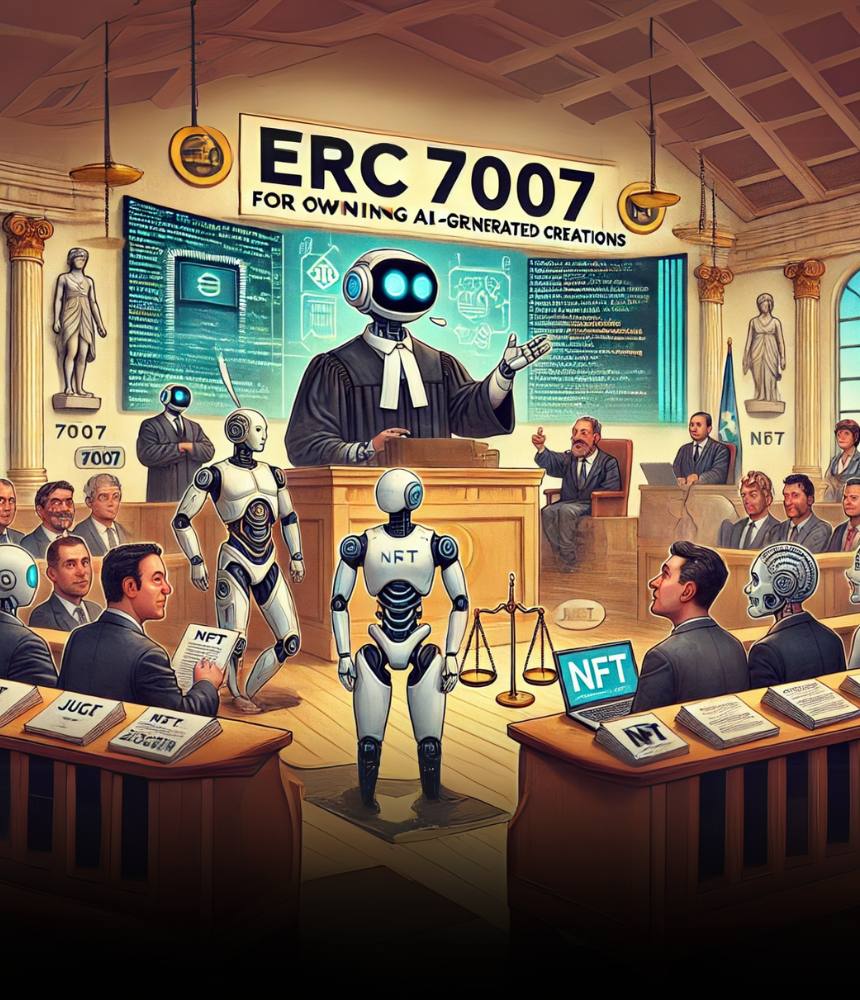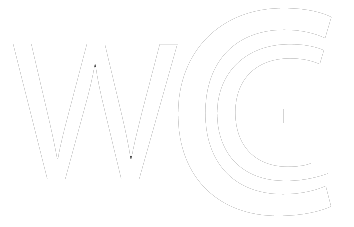ERC7007 Own Your AI Creations, Effortlessly

AI-generated art has opened new doors for creativity, but it also raises a major questionwho owns the work when a machine creates it?
Traditional copyright laws weren't designed for AI, leaving artists, developers, and legal experts struggling with questions of ownership and originality.
This uncertainty has led to copyright disputes, concerns over AI learning from existing works, and fears that human artists could lose recognition and income. Without clear protections, both AI-generated and human-created digital art remain at risk.
The good news is that blockchain technology offers solutions. Some blockchain platforms are stepping in to provide even more accessibility to verify ownership, transparency, and fair compensationhelping to protect digital art, no matter who (or what) creates it.
What is AI-Generated Art?
AI-generated art is artwork created with the help of artificial intelligence.
Instead of a person drawing or painting by hand, AI tools use data and patterns to create images, music, or even designs. These tools can copy famous styles, make something new, or help artists bring their ideas to life.
AI-created art has made creativity more accessible. Anyone can type a description, and AI will turn it into a detailed image in seconds. Some artists use AI to experiment with new ideas, while others let the technology generate entire pieces.
The First Forms of Machine-Generated Art
Machine-generated art has been developing for decades, something surprising for many people long before it became widely known.
In the 1960s, artists and computer scientists experimented with early algorithms to create abstract patterns and geometric designs. These early works, often created using basic programming languages, laid the foundation for what would later become AI-driven creativity.
As technology improved, AI art moved beyond simple patterns. Researchers developed neural networks in the 1990s and early 2000s capable of recognizing and replicating artistic styles. This led to AI programs that could transform photos into paintings, like how apps today can apply filters to mimic famous artists.
However, one of the biggest shifts came with NFTs (Non-Fungible Tokens). Before NFTs, digital artincluding AI-generated pieceswas difficult to sell or claim ownership over because anyone could copy and share it.
NFTs changed this by using blockchain technology to verify ownership and uniqueness. AI artists could sell their work as digital assets, creating a new art market.
Some of the first AI-based NFT projects demonstrated how AI and blockchain could work together, making digital art more valuable and collectible.
With these advancements, AI-created art has become a recognized form of creative expression. Today, AI can generate paintings, sculptures, music, and animations, and artists and collectors are embracing the possibilities.
The Challenges of AI-Created Art
And as all good things come with challenges, AI-created art is no exception. While it has opened up new creative possibilities, it has also raised serious questions and concerns, especially around ownership, originality, and ethics.
One of the biggest problems is copyright and ownership. Since AI can create artwork without direct human involvement, who owns the final piece is unclear. In most legal systems, AI cannot hold copyright, meaning ownership usually falls to the person who gave the AI instructions or the company that built the AI.
However, when AI generates highly detailed images with minimal human input, this creates a gray area in copyright law, making it difficult to determine who deserves credit and compensation.
Another issue is AI learning from existing art. AI models are trained on vast amounts of data, often including copyrighted artworks. This raises the question: is AI-generated content truly original, or is it just an altered version of existing works? Many artists argue that AI should not be trained on their creations without permission, while developers claim it falls under fair use or transformation. This debate continues to grow as more AI-generated pieces resemble real artists' styles.
There are also concerns about the devaluation of human creativity. If AI can generate high-quality art in seconds, will human artists struggle to compete? Some fear that AI-generated content could flood the market, making it harder for traditional artists to earn recognition and income.
Others see AI as just another tool, like photography or digital editing, that artists can use to enhance their creativity rather than replace it.
These challenges highlight the need for clearer laws and ethical guidelines to protect artists and AI-generated creativity's future. But until then, it will help at least some tools that can help in this regard.
How to Protect AI-Created Art?
With the growing presence of AI-created art, protecting ownership and ensuring fair use has become a major concern. Since AI challenges traditional copyright laws, artists and developers need new ways to verify authorship, prove originality, and secure rights over their creations. Fortunately, several emerging solutions are helping address these issues.
One promising approach is blockchain technology, which creates a transparent, unchangeable record of ownership. NFTs (Non-Fungible Tokens) were one of the first tools to bring this idea to digital art, allowing artists to assign unique ownership to their works. However, while NFTs helped establish authenticity, they didn't fully solve the issue of protecting AI-generated content, especially when proving originality or determining fair use.
A more advanced solution is the 7007 protocol, which provides verifiable ownership and authenticity for AI-generated content (AIGC) on the blockchain. Unlike NFTs, this protocol protects AI-created art and human-generated works, ensuring that both digital and traditional artists can safeguard their intellectual property. The 7007 protocol offers a transparent and traceable system where creatorswhether human or AIcan securely register and manage their works. This helps prevent unauthorized use while making it easier for artists to monetize their creations fairly and efficiently.
Aside from blockchain-based solutions, another important approach is developing clearer copyright laws. However, since implementing such laws is a complex and lengthy process, platforms like the 7007 protocol have become essential go-to solutions for creators today.
Conclusion
We hope you now have a clearer understanding of AI-generated art and the challenges it brings. As technology evolves, new solutions like blockchain (including different blockchain platforms) and improved copyright laws are helping protect digital creativity.
The future is still unfolding, but AI-created art can become more secure for everyone with the right tools, ownership, and fairness.
Disclaimer: This article is provided for informational purposes only. It is not offered or intended to be used as legal, tax, investment, financial, or other advice.
Read more: https://cryptodaily.co.uk/2025/02/erc7007-own-your-ai-creations-effortlessly
Text source: Crypto Daily™










